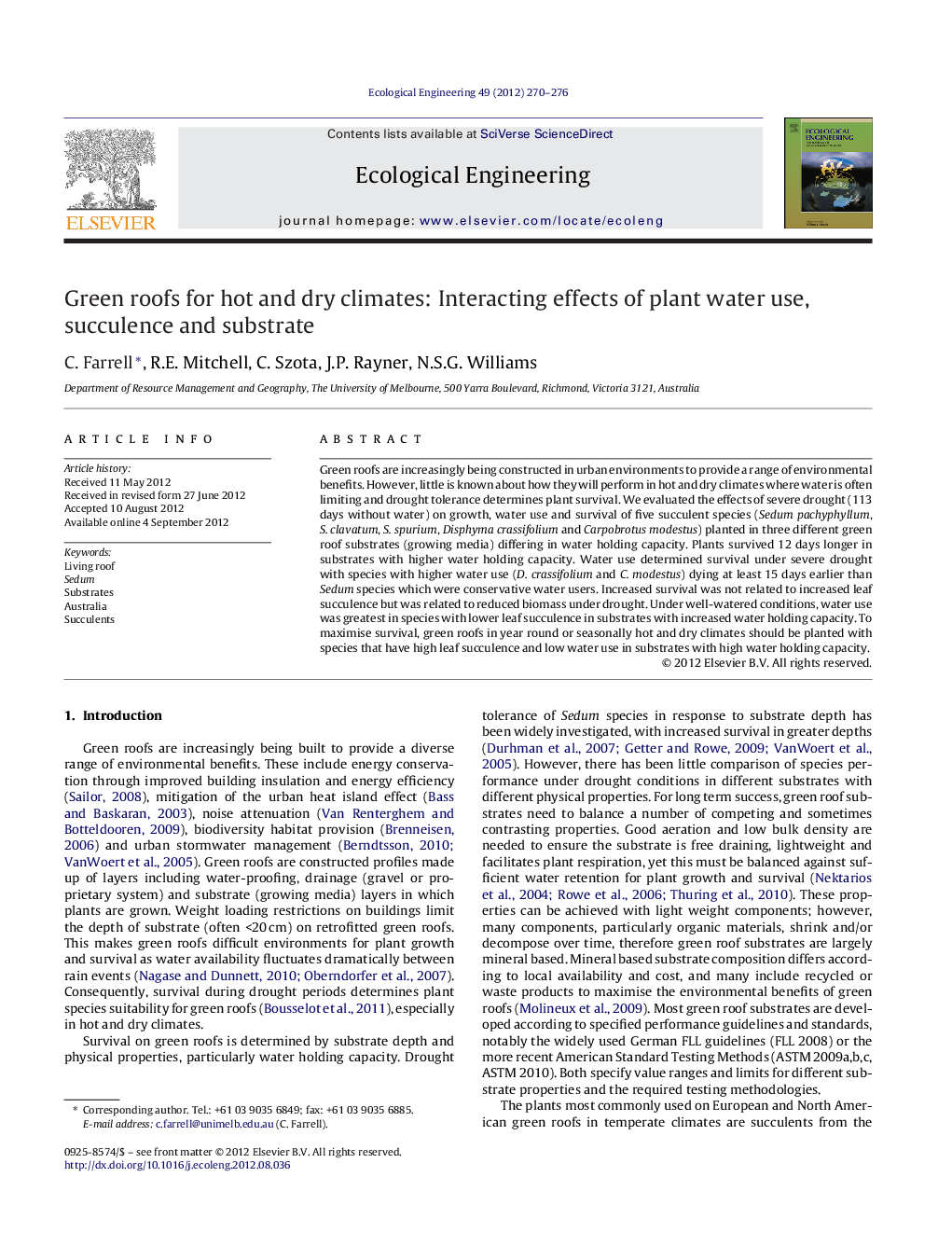| Article ID | Journal | Published Year | Pages | File Type |
|---|---|---|---|---|
| 4389913 | Ecological Engineering | 2012 | 7 Pages |
Green roofs are increasingly being constructed in urban environments to provide a range of environmental benefits. However, little is known about how they will perform in hot and dry climates where water is often limiting and drought tolerance determines plant survival. We evaluated the effects of severe drought (113 days without water) on growth, water use and survival of five succulent species (Sedum pachyphyllum, S. clavatum, S. spurium, Disphyma crassifolium and Carpobrotus modestus) planted in three different green roof substrates (growing media) differing in water holding capacity. Plants survived 12 days longer in substrates with higher water holding capacity. Water use determined survival under severe drought with species with higher water use (D. crassifolium and C. modestus) dying at least 15 days earlier than Sedum species which were conservative water users. Increased survival was not related to increased leaf succulence but was related to reduced biomass under drought. Under well-watered conditions, water use was greatest in species with lower leaf succulence in substrates with increased water holding capacity. To maximise survival, green roofs in year round or seasonally hot and dry climates should be planted with species that have high leaf succulence and low water use in substrates with high water holding capacity.
► Survival is determined by substrate properties, leaf succulence and plant water use. ► Plant survival was greatest in substrates with higher water holding capacities. ► Plants with low water use and high leaf succulence survived longer.
